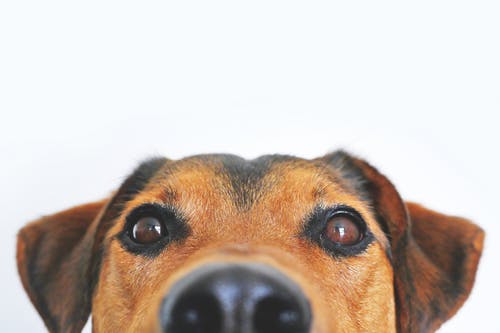Category: Veterinary

Diet is significant in maintaining the health of your dog’s gastrointestinal system. The right balance of nutrients helps keep the GI tract functioning properly, while the wrong mix can lead to disease.
There are several things to remember regarding your dog’s diet and GI health, including;
1. Fiber is vital for proper GI function.
Fiber helps keep your dog’s digestive system moving and prevents constipation. It also helps add bulk to stool, which makes it easier to pass. Good sources of fiber include fresh fruits and vegetables, whole grains, and high-fiber dog food.
You have to note that there are other kinds of GI diseases, not only constipation. These include:
- Diarrhea
- Pancreatitis
- Liver disease
- Exocrine pancreatic insufficiency
- Celiac disease
- Intestinal parasites
- Inflammatory bowel disease (IBD)
In some cases, these conditions may require urgent vet attention. Take them immediately to a 24/7 emergency vet clinic or hospital (visit this page to learn more) if you notice any of the following symptoms:
- Black, tarry, or bloody stools
- Vomiting blood or coffee grounds
- Severe abdominal pain
- Lethargy
- Weight loss
- Decreased appetite
- Jaundice (yellow skin and the whites of the eyes)
2. Fat is necessary for proper nutrition, but too much fat can be hard on the GI tract.
Fat is a concentrated energy source and provides essential fatty acids that dogs need for healthy skin and coats. However, too much fat can result in obesity and pancreatitis.
When it comes to fat, it’s crucial to find a balance. Look for dog food with moderate fat levels, and avoid giving your dog high-fat treats like table scraps.
3. Protein is essential in a dog’s diet, but choosing the right kind of protein is important.
Protein is necessary for muscle development, cell repair, and other vital functions. Dogs get the majority of their protein from meat, but there are also plant-based sources of protein, such as beans and legumes.
Consult with your veterinarian when you choose protein for your dogs. Some dogs, such as those with liver disease, may need a diet lower in protein. Others, like growing puppies, may require a higher protein diet.
The best way to ensure that your pet gets the right amount and type of protein is to feed them high-quality commercial dog food. A veterinary nutritionist should formulate this food and meet the AAFCO nutritional guidelines.
That’s why you must choose an experienced and reputable vet clinic with complete facilities, including in-house lab tests. This is because some GI diseases can only be diagnosed through comprehensive tests, like biopsies and x-rays.
4. Carbohydrates are a significant energy source for dogs, but they should make up a small portion of the diet.
Carbohydrates are found in a lot of foods, such as grains, fruits, and vegetables. While carbohydrates are necessary for energy, too many carbs can lead to weight gain and other health problems.
When it comes to carbs, it’s crucial to find a balance. Look for dog food with moderate carbohydrate levels, and avoid giving your dog high-carb treats like table scraps.
5. Water is vital for all life, and that includes your dog.
Water is about 80% of a dog’s body weight and is necessary for many vital functions. It helps transport nutrients around a dog’s body, aids in digestion, and helps keep the body temperature regulated.
Be sure that your pet has fresh, clean water. This means changing their water bowl regularly and ensuring that they have a bowl of clean water available all the time, even when you’re not home.
If you notice that your dog is drinking more water than usual, or if they seem to be urinating more frequently, it could be a sign of a medical condition, and you should bring them to the vet for a check-up.
Make sure to choose a 24/7 vet clinic or hospital, such as St. Louis Animal Hospital, as your partner in your pet’s health and wellness. This is especially helpful in sudden illness or injury, as they can provide immediate care.
In Conclusion
Remember that diet is vital to your dog’s GI health, but other factors must also be considered. If they show signs of GI distress, take them to the vet for a check-up. Also, always consult your veterinarian about the best diet for your dog, especially if they suffer from GI disease.

Housetraining your dog is a win-win situation for you and your dog. Think about how pleasing it can be to successfully train your puppy to get a new skill at the end of the training program. Additionally, you will most likely have a better connection with your pet. You will no longer have to handle the hassles of a puppy-created mess or instructions that fall on deaf ears. So, how do you appropriately house train your puppy?
How to Successfully House-Train a Puppy
Home training puppy programs require a considerable period and initiative. However, house training your dog can be valuable if you look at the end results. Here are four tips to help you start home training your pup if you are under the perception that it is too hard.
1. Conduct Research
If you are doing home-training puppy programs for the first time, you must conduct some preliminary research. Potty training is the most essential element of house training a pet. This is substantial because you do not wish to arrive home to see rubbish everywhere. Begin potty training your puppy immediately. You must teach basic directions like ‘sit’ and ‘stay.’
2. Practice Extended Training
Another piece of advice for puppy parents who are house training their puppies is to exceed teaching the standard instructions of ‘sit’ and ‘stay’ or potty training. You can bring it a little further by training it to ‘retrieve’ an object for you, such as its favorite plaything, which can then be expanded to other items. You may eventually teach it to ‘get’ your newspapers for you or to shake your hand.
Additionally, you need to observe the safety of your dog when training. Suppose your dogs run into an injury during training and require urgent treatment. In that case, you must bring them to the nearby veterinarian facility in your area. Treatment and healing will fast when dealt with by professionals. You can explore the web to learn more about emergency veterinary services you can find in an animal hospital.
3. Look For Professional Support
If you believe that housebreaking puppies by yourself are too hard, you can seek expert support. Indeed, you should pay a premium for their recommendations. Acquiring professional videos is an alternative to obtaining specialist advice without having to spend too much on it. These video clips will certainly teach you how to train your dog step-by-step so that you do not have any problems following. Therefore, you may simply complete the program by yourself at home.
In addition to training, you should check their well-being. You need to locate a competent pet hospital in your locality. A reliable facility should have the required tools, equipment, and practitioners accessible during an emergency. Additionally, it must be able to offer geriatric dog care for your older dogs when needed.
4. Use Positive Approaches
The study shows positive support is the most distinctive approach for home training puppies. When your dog complies with the directions perfectly, offer it lots of praise and special goodies, such as its favorite canine biscuits. Dogs, like kids, respond better and remember more info if trained in a stress-free environment.
Punishments and reprimands will cause your dog to drop confidence and fear you. You must also recognize that occasionally, their habits are impacted by their health condition. When your dogs deal with a severe dental problem, they can become aggressive and unable to follow your directions. In that case, you must take them to an animal facility for examination. Dog teeth cleaning is crucial since they can quickly acquire diseases with a dirty mouth and teeth.

Hamsters are cute; tiny animals roam around the cage, dig, and climb. They are better suited to calmer children because they are small and delicate. Hamsters mostly sleep throughout the day and are active in the evening.
Small, slender rodents known as Hamsters can be excellent pets when given the proper medical care and care. They can be sensitive, however. Hamsters can bite if it’s scared or awakened rapidly.
A specialist vet must inspect the Hamster as it’s considered an “exotic creature.” It is essential to know the best way to select the right Hamster, what kind of materials you’ll require, and how to properly take care of your new pet if you’re thinking about getting an animal for yourself or your child. While hamsters are often considered low-maintenance animals, they require good care to remain healthy and happy.
Getting a Pet Hamster
Hamsters are common pets. Because of their size, they do not require a lot of space and can be pretty amusing. It is essential to know the requirements before acquiring one for your pet.
Diet
The hamsters typically eat grains, seeds, vegetables, and fruits such as apples. Feed your pet hamster rats with rat blocks mixed with seeds mix or pellets of Hamster.
Make use of a combination of seeds made of a mix of pellets, seeds, grains, and dry vegetables. Make sure to provide the Hamster you love to clean drinking water. Hamsters eat greens such as lettuce, spinach, and carrots.
Health Care
Hamsters that live in the pet are susceptible to amyloidosis and congestive heart failure kidney disease. These conditions can lead to their death. There is no cure for amyloidosis or congestive cardiac failure.
Furthermore, hamsters are susceptible to various microorganisms resulting in diarrhea or dehydration. Because some bacteria can transmit to humans, it is vital to take care when handling the sick Hamster. Look up “Dentistry in Mechanicsburg” for the best results.
Housing
Our pets need hamsters to keep in a clean cage with enough space. Provide them with bedding that is clean of dust. Hamsters are prone to digging. Create a bed that is deep enough to allow this in the cage.
It is essential to ensure that your house is safe and suitable for keeping a Hamster. Because their small, they could be considered prey by domestic animals. Take all the necessary precautions to protect your Hamster from the other pets in your home.
Socialization
Between themselves and in relationships with other hamsters, hamsters are social creatures. They try to communicate with each other by using body language and use it to communicate with each other.
Hamsters can communicate with other hamsters by releasing chemicals via their noses. They can distinguish themselves due to their acute ability to smell.
Training
It’s easy for anyone to train Hamsters. To maintain order, litter-train your pet hamster.
Food items are often stored within their beds. Cleaning can be made more accessible by litter training. Look up “Veterinary internal medicine” for more details.
Caring
Keep an of your Hamsters. You can tell the difference when they behave differently while performing this. It is possible to contact an ophthalmologist if you suspect illness.
It is best to give your sick Hamster only the medicines prescribed by your veterinarian. Do not give hamsters animal or human medication as they can harm them. Consult a veterinarian; visit their page on exotic animal care for more information.

Many pet owners have difficulty imagining their lives without their dogs. The presence of their pets can make our homes appear more comfortable and homely. They add a sense of comfort to our homes; without them, they’re not as complete. This is why we can tell that something is not right when our pets suddenly become tired, sick, or unwilling to play or eat.
While some conditions aren’t as grave and may be able to wait until you revisit the veterinarian, obvious signs can be more dangerous. They could be life-threatening if ignored, according to the majority of veterinarians.
Dog Emergency Symptoms to Be Aware of
In this article, we’ll look at some of the most serious signs that your dog is suffering from a sickness and should be transported to the veterinarian or emergency room as soon as possible.
Signs of Pain
Recognizing the signs that an animal is in discomfort is essential to a responsible pet’s management. There are signs of discomfort that include restlessness, anxiety, anxiousness and crying in pain, or jerking movements whenever you touch certain areas in the body (e.g., the limbs or stomachs and back). Some dogs cannot walk or move and may be seen moving or hobbling the hind legs of their owners. To find out more about signs of pain, pet wellness exams may be needed.
Seizures
Uncontrollable flashes of activity in the dog’s brain cause seizures or tremors. They can be described as a minute-long muscle twitch or uncontrollable shaking. Other signs include collapsing stiffness, muscle twitching, drooling, tongue chewing, frosty mouth, and loss of consciousness. The effects of poisoning, kidney or liver diseases, brain injuries, strokes, cancer, or brain injuries are among the most common causes of seizures. Learn more info about dental healthcare.
Coughing, Vomiting, and Diarrhea
Something is not right when you notice that your dog isn’t sleeping throughout the night and is constantly coughing. Your dog’s respiratory system could be infected by viruses, bacteria, and fungi, which could cause bronchitis or pneumonia. It is also an indicator of heart problems.
The leading causes of diarrhea for dogs include food allergies, parasites, intolerances, and stress. If you observe your dog vomits more than 2 or 3 times could suggest the possibility that your dog has consumed toxic materials or is suffering from an undiagnosed medical issue, and you should seek urgent medical treatment.
Do not delay longer than 12 hours before sending your pet to the veterinarian to treat vomiting or diarrhea that isn’t going out or worsens. They are susceptible to dehydration which can cause serious harm to vital organs.
Breathing Problems
You may notice your dog struggling to breathe after a run can seem normal. But, breathing issues can become deadly. Trouble breathing is usually caused by respiratory or lung problems. However, they may also indicate other health problems, like heartworms, obesity or tumors, heart issues, allergies, and trauma or injury. Labored and fast breaths, a wide mouth, and an extended tongue indicate that your dog is experiencing breathing difficulties. You might also observe your dog breathing heavily and coughing up foamy liquid saliva, and the gums are pale or blueish.
Inability to Urinate or Defecate
The swelling of your dog’s abdomen may be a sign of a urinary obstruction which could be life-threatening if you’re squatting or trying to go to the bathroom and producing less to none. If a dog can’t urinate, toxic and harmful levels of waste are created within the body. Urethral stones, bladder stones, and cancer are the most frequent obstructions to urinary tracts. It is imperative to seek medical care. In case your pet needs soft tissue surgery, check this out.
Conclusion
Schedule a vet appointment if you observe any unusualities in your pet’s health. If you care for a pet’s health, it is crucial to pay attention to even minor changes—record as many details regarding the observations you make, including dates, times and frequency, and circumstances. Your dog will receive a precise diagnosis and treatment program when your vet has the data.

It takes a lot of work to raise dogs. They are like being around a little child, one that will practically eat, pee on, and destroy anything in your home. Having a dog requires consistent attention, but the benefits are priceless. It will be simpler for you to help adjust to their new house if you plan for your new puppies. So, are you familiar with what needs to be done before bringing them home?
What to Prepare Before Bringing Home a New Puppy
Getting a new dog is one of the most positive things for a pet enthusiast. Whether you buy a pet from a breeder or an animal sanctuary, taking home a new “bundle of joy” is an enjoyable experience. However, you must make plans before taking your new puppies home. The following things are needed for new puppies to guarantee a smooth transition home.
1. Food
Your dogs’ food should be at the top of your needed list. Because of their relatively delicate gastrointestinal systems, dogs are quickly disrupted when their meal is quickly altered. Regardless of where you obtain your puppies, be careful to speak with the person feeding them and learn what they have been eating.
You should also take care of their oral health. Some foods can harm a dog’s teeth, creating significant concerns. It is essential to take them to a pet dentist to maintain the health of their teeth. In addition, vets specializing in animal dentistry in an excellent facility like Dana Park Veterinary Hospital can perform dental surgery on your dogs when required. But as other people have mentioned, prevention is preferable to cure.
2. Toys and Chews
Every pet requires playthings and healthy chewables. These are not just luxurious things for your dogs! Your puppies will start biting your furniture if you don’t provide them with chews and toys to play with. If you give your puppies their playthings and chew items, they will be much less likely to gnaw on inappropriate things like your footwear, furniture, and TV remotes.
Offer your dogs a variety of playthings and chews. It’s also a good idea to find out your pets’ health status before starting any physical exercise by taking them in for dog and cat wellness exams at the vet hospital. Furthermore, you should speak with a veterinarian about the most effective chew playthings based on your pet’s age. These can avoid damaging their teeth and periodontal.
3. Bed
Your puppies will need a bed similar to anyone else. It’s an excellent concept for puppies to have personal space, even if you allow them to sleep on your bed. Your dogs require a place where they can retreat from the outdoors. Your puppies need a calm area to sleep in when the home gets chaotic and they want to relax.
4. Leash and Collar
Even young dogs will require a chain and collar. There are several kinds of collars available. However, some are developed more for training than everyday usage. When the collar is adjusted correctly, two fingers must fit between it and the puppy’s neck. Otherwise, the collar is uncomfortably tight.
However, a too loose collar is risky because your puppies might escape it and flee when you’re strolling them. If their collar has flattened their hair, it is essential to take them to a grooming clinic for pet grooming services. They will feel comfortable doing this and making use of the chain. If you want to locate a grooming facility in your area, you can simply search “pet grooming near me” online.

What do we think of responsible pet ownership? While there is no best description, experts present a good starting point for the way we see pet ownership: “Owning a dog is more than just a privilege; it’s a responsibility.” Having a pet calls for a great deal of responsibility, whether you have a dog or a feline.
Pets are not disposable accessories that may be ignored. Pets are loyal companions who need regular focus, affection, and consideration. There are several lists available to be a responsible pet parent; however, we’ve compiled a list of the most essential tips we think all pet owners need to follow.
Tips for Responsible Pet Ownership
A new pet might bring a bunch of joy and happiness to your family, which is why lots of people decide to adopt one. Pets can give entertainment and enjoyment; however, they also come along with responsibilities that everyone must think about. Even if there isn’t a clear explanation of what constitutes a responsible pet owner, a few generally acknowledged guidelines can be used to give your pets a cheerful, healthy life.
Healthcare
Preventive care is essential to the long and healthy life of your pet. You need to establish a connection with a vet to help you stay on schedule with regular examinations and vaccinations. Your vet can also advise you on your pet’s grooming and hygiene needs and seasonal difficulties like fleas, ticks, and worms.
As your pet ages, consulting with a vet might be useful. As pets get older, their health will inevitably weaken. Make decisions about your pet’s end-of-life care with the support of your veterinarian. They can help you keep your pet delighted, pain-free, and adored.
Commitment
When you take in a new pet, you should be prepared to take care of him for the rest of his life. The routine care of pets is totally dependent on their human companions. You should consider how much time you devote to looking after a pet. Life usually gives us surprises; therefore, you should also think of who could be capable of caring for your pet if sudden things happen that stop you from doing so yourself.
Home and Food
There’s no need to discuss that your pet’s basic needs consist of food and water. Your pets will require regular access to clean water, healthy food, and shelter from the elements, probably within the home. If we treat our pets like family and let them stay in our homes with us, they will lead healthier, better, and better lives.
Spaying and Neutering
Animal overpopulation is a significant problem in the USA and around the world. Spaying or neutering your pets is a vital part of responsible pet ownership. There is no reason for any type of pet to reproduce until every homeless pet gets shelter. Also, learn about internal medicine vet here.
Enrichment and Exercise
Like people, our pets need frequent exercise. To preserve their muscles, hearts, and immune systems tough and healthy, they need to exercise often. Regular physical activity also keeps pets delighted by keeping their minds active. The psychological demands of our pets should also be considered. Pets crave their human companions’ attention. Among the most cruel things is to leave a dog chained to a tree in the backyard or a cat meowing loudly outdoors at an unattended door. Visit broadway4pets.com for more information about pet care.
Love
This may be the most important responsibility of all. We do not own our pets; they’re part of our family. They are our buddies who depend on us for their care. Families need to treat them like their own kids because they need our constant attention and care. Our pets understand us and want to make us pleased. Responsible pet owners give the same energy to their beloved pets.







